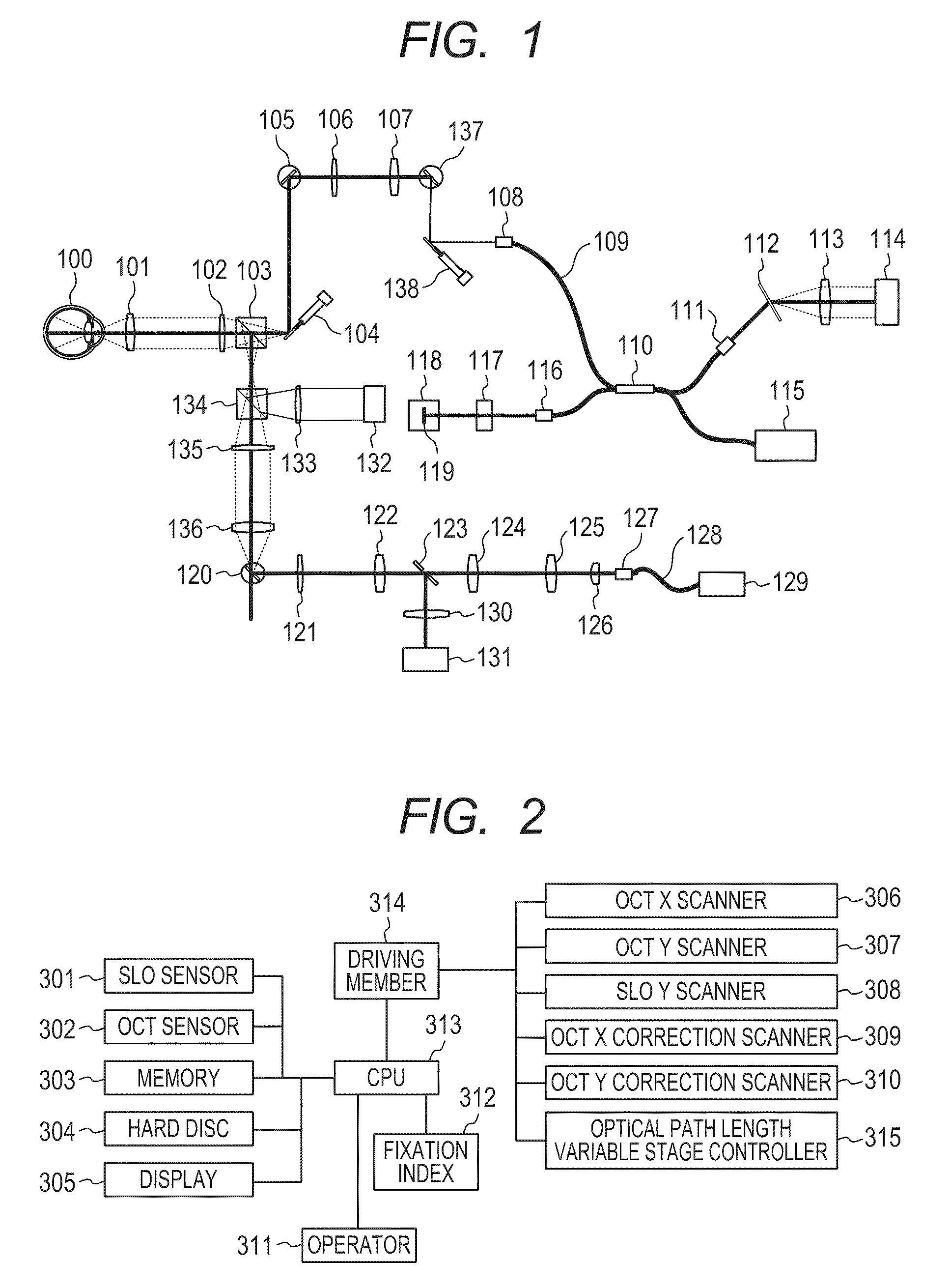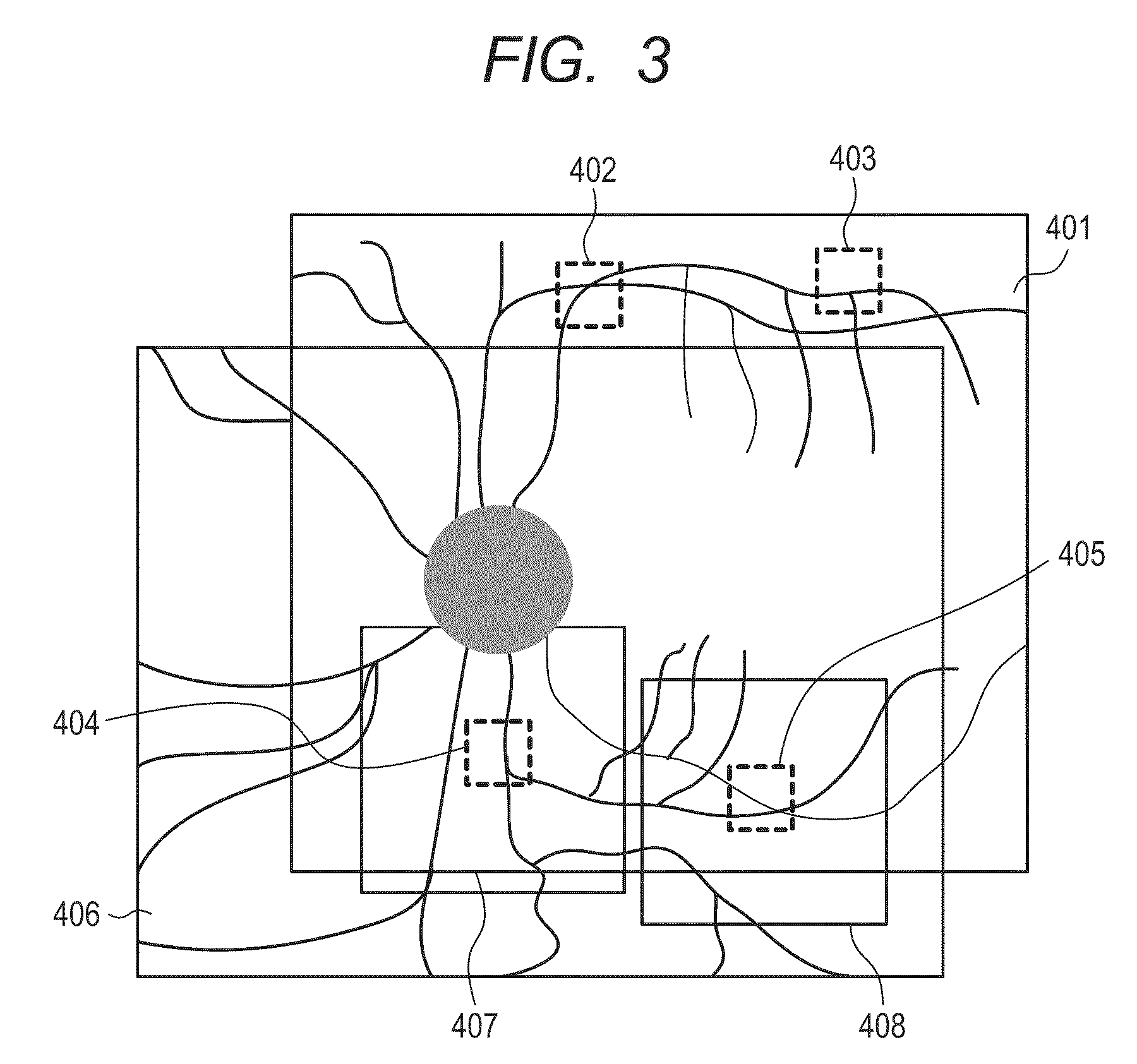Characteristic image extraction method and ophthalmologic apparatus
- Summary
- Abstract
- Description
- Claims
- Application Information
AI Technical Summary
Benefits of technology
Problems solved by technology
Method used
Image
Examples
first embodiment
[0023]A first embodiment is described by taking a case where the present invention is applied to an OCT apparatus with a tracking function for extracting templates (also referred to as “first characteristic points or first characteristic images”) from a fundus image (also referred to as “first fundus image”), subjecting a newly (continuously) taken fundus image (also referred to as “second fundus image”) to pattern matching (retrieving the extracted characteristic images from the newly taken fundus image) to thereby detect an eye movement, and correcting an OCT beam. The description is made with reference to an optical structure diagram of FIG. 1 illustrating the OCT apparatus with a tracking function using a line-scan SLO, a block diagram of FIG. 2 illustrating the OCT apparatus with a tracking function using a line-scan SLO, and diagrams of FIGS. 3 and 4 illustrating fundus images.
[0024]In a tracking technology performed in this embodiment, a movement in a direction along a fundus...
second embodiment
[0053]In the first embodiment, the range for reacquiring templates after the movement of the fixation index is limited to the remaining part of the SLO image 406 acquired after the movement of the fixation index except the above-mentioned peripheries 407 and 408 of the templates 404 and 405, respectively, remaining within the SLO image 406 acquired after the movement of the fixation index among the existing templates 402, 403, 404, and 405. This is not essential conditions, and a configuration of a second embodiment may be employed.
[0054]The optical system including the SLO and the OCT apparatus is the same as that of the first embodiment. The method of performing the tracking of an OCT based on the SLO image is also the same. Only an algorithm for reacquiring the templates when the fixation index is moved is different.
[0055]The second embodiment is described with reference to a conceptual diagram of FIG. 4 illustrating a relationship between the SLO images and the templates. The te...
PUM
 Login to View More
Login to View More Abstract
Description
Claims
Application Information
 Login to View More
Login to View More - Generate Ideas
- Intellectual Property
- Life Sciences
- Materials
- Tech Scout
- Unparalleled Data Quality
- Higher Quality Content
- 60% Fewer Hallucinations
Browse by: Latest US Patents, China's latest patents, Technical Efficacy Thesaurus, Application Domain, Technology Topic, Popular Technical Reports.
© 2025 PatSnap. All rights reserved.Legal|Privacy policy|Modern Slavery Act Transparency Statement|Sitemap|About US| Contact US: help@patsnap.com



